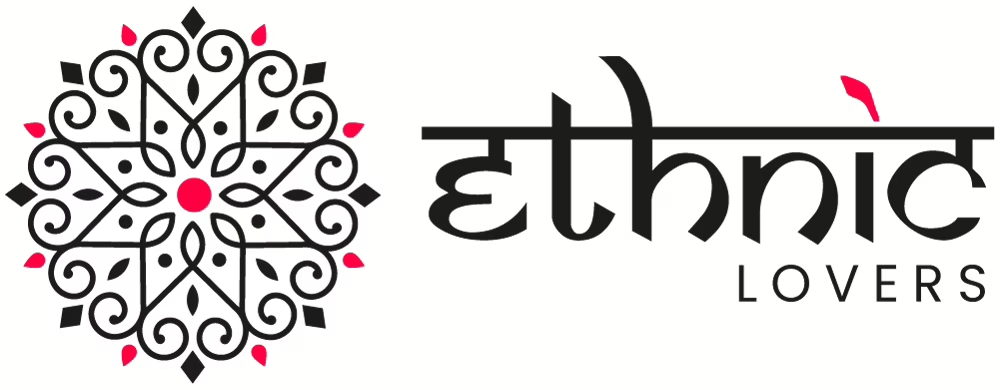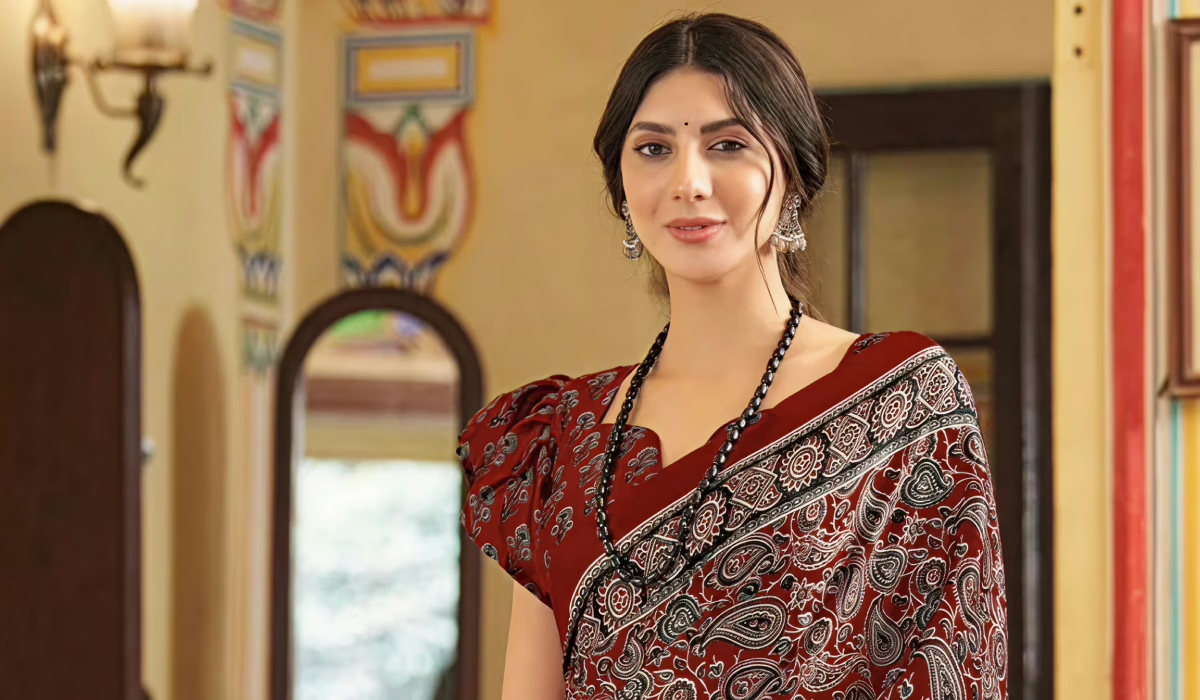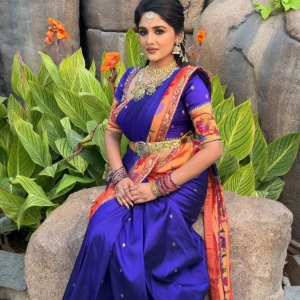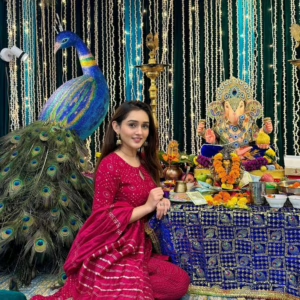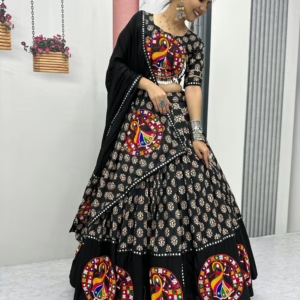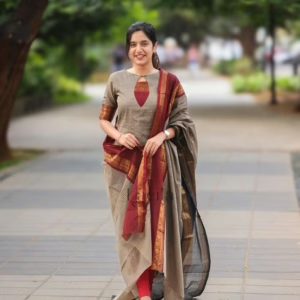Have you noticed how Ajrakh hand block prints catch our attention the moment we lay our eyes on them. A staple favorite among Indian ethnic wear connoisseurs, this intricate art of color and complex geometrical design dates back to the ancient Indus Valley Civilization.
Later in the 16th century the Khatri Sindhi artisans from Pakistan came to India to settle at Kutch, Gujarat, India. With the passage of time, they mingled and merged with the locals and gifted us the beautiful art of Ajrakh hand blocked prints.
Ajrakh hand block prints
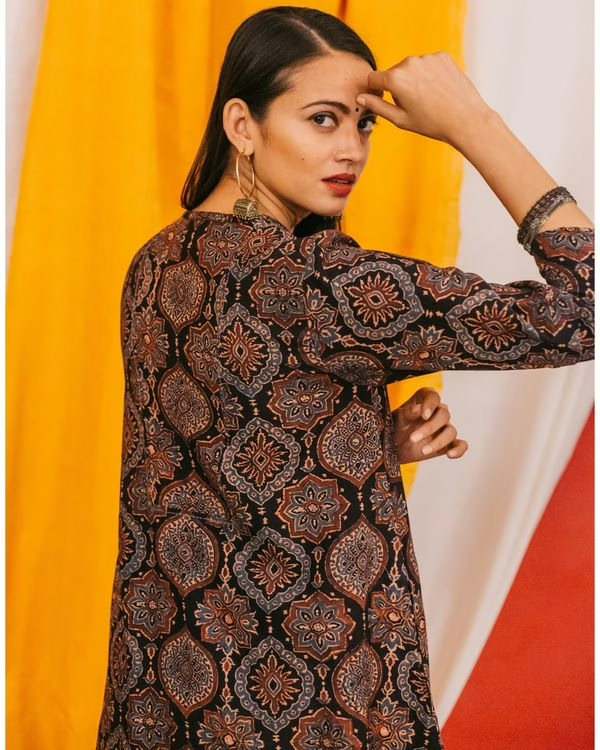
Photo Credits: Pinterest
The term Ajrakh means “blue like the sky” in Persian and Arabic. This explains why you will mostly find the color” blue” dominating the print. Besides blue, the other primary colors used in these intricate beautiful pieces are red, white, blue, yellow, brown and black. They are subtle in nature and resonate with the Earthly hues of Mother Nature.
Non-Toxic Organic Dyes Derived From Nature
All the colors used in the printing process are natural dyes extracted from plants, vegetables and minerals. Indigo (blue) and Madder (red) are the main colors used. Ajrakh is printed in “ekpuri” (single side) and bipuri (double side) on cotton, silk and chanderi fabrics. The hand block printing process has several stages of resist printing and dyeing with carved blocks of wood. Complex symmetrical geometrical designs can be printed on the fabric with these blocks. One block can be used by the artisan to make prints on both sides of the fabric.
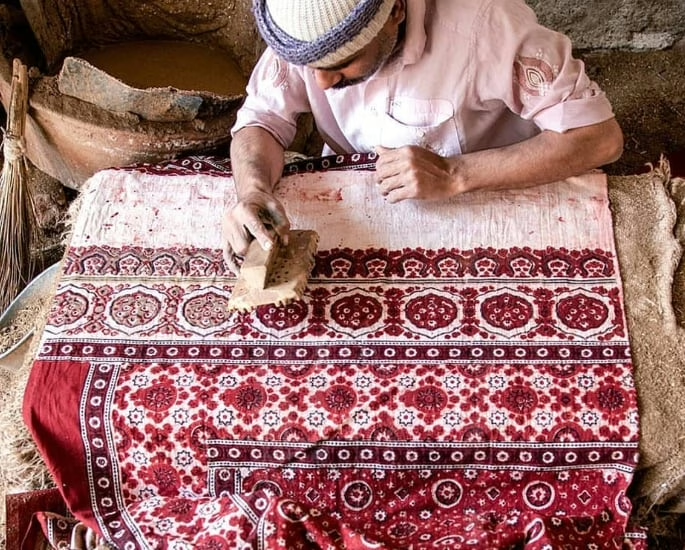
Photo Credits -Desi Blitz
Ajrakh is a hot favorite with Indian fashion designers today
Eminent fashion designers in Indian ethnic wear love Ajrakh primarily because it is sustainable and organic in nature. Buying Ajrakh sarees and fabrics is a novel way of embracing classic sustainable fashion rendering constant livelihood to local craftsmen who spent their entire life mastering the art. In fact, it is one of the hottest trends for 2025 and to know more, you can check out our latest post here.
Ajrakh sarees and fabric are hand-dyed with organic colors like pomegranate, indigo, madder, etc making it non-allergic to the skin. Choosing beautiful Ajrakh printed sarees or fabrics is a tribute to this ancient art passed down to us by talented artisans of the Indus Valley Civilization. Moreover, by purchasing these mesmerizing pieces of beauty will encourage our future generations to embrace safe and sustainable fashion in the future.
Ajrakh Style Guide
Ajrakh handblock prints are dominating the style charts in 2025. In the super-dynamic world of India’s ethnic wear fashion where Kalamkari, Chanderi, and Benarasi are reigning with pride, pieces like Ajrakh fabrics are capturing hearts with the natural organic beauty and appeal.
Before choosing an Ajrakh piece, consider what the event or occasion is. For daily casual looks, opt for something laid-back and structured. For formal events, a polished look will be perfect. Pair the attire with a single statement piece. Ensure it is simple as this helps to make the hand block prints shine.
If you are going in for a layered look, choose a solid -colored cardigan, shawl, or a jacket. This piece will offer a warm and dynamic dimension to your outfit.
For a neutral and simple look, pair your Ajrakh print with soft tones like beige, peach, white or grey. They give you a chic look making the bright prints to pop out.
Let us look at some classic and elegant Ajrakh hand block prints below-
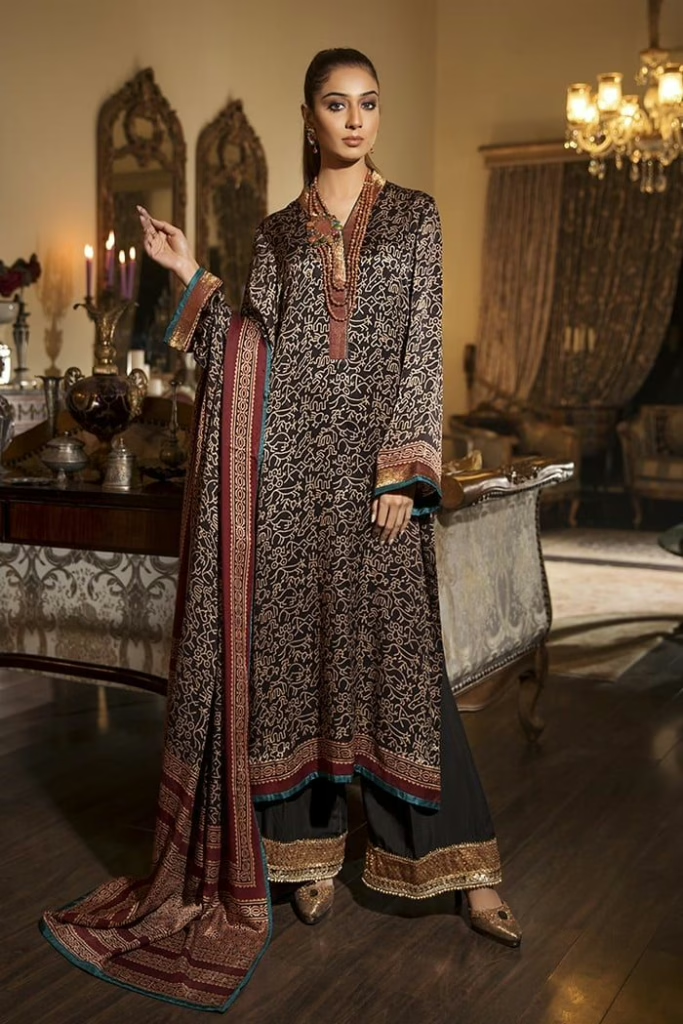
Photo Credits: Pinterest
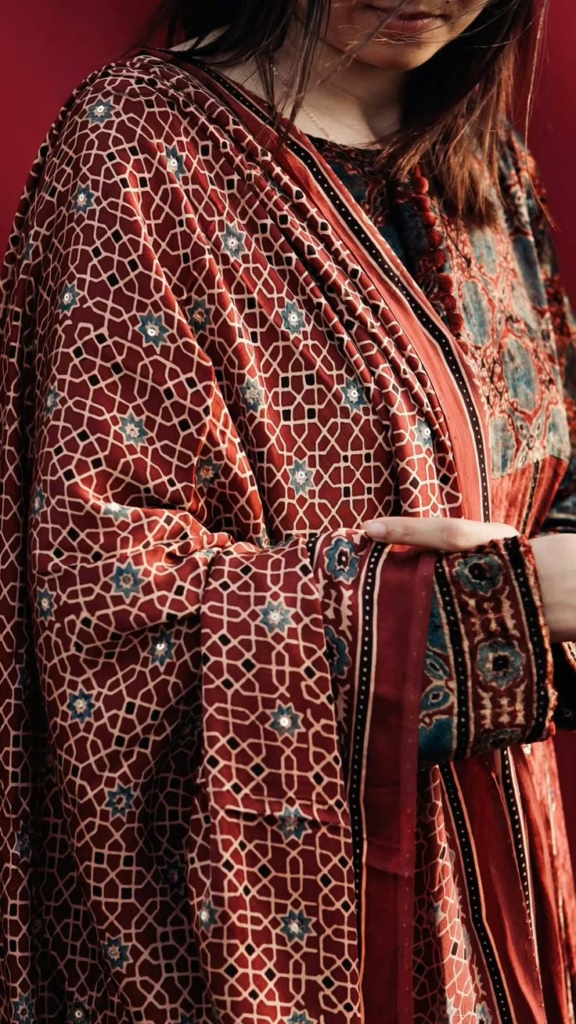
Photo Credits: Pinterest
To explore more on Ajrakh print and fabrics, visit www.ethniclovers.com
